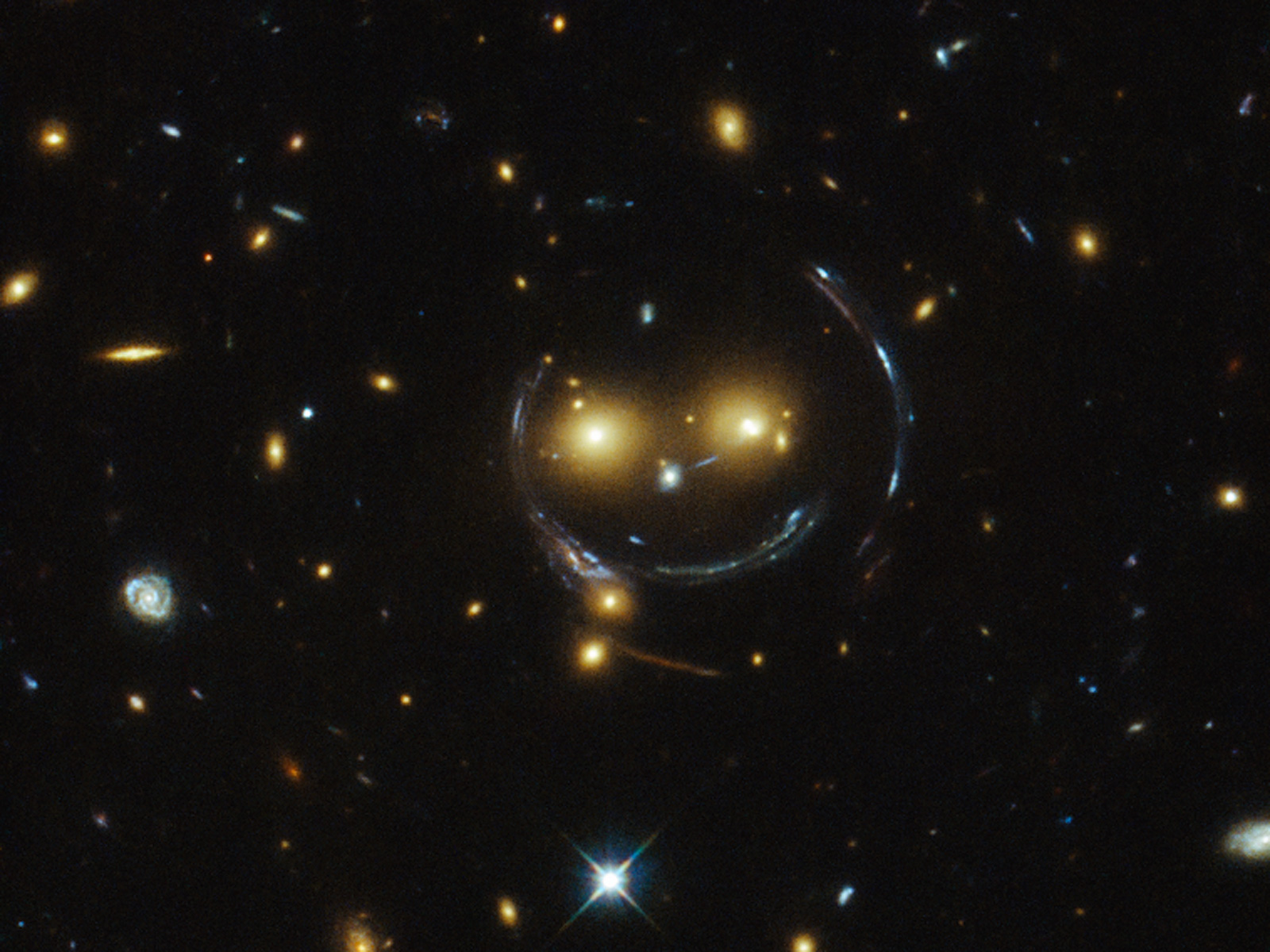-
Rotation curve method
(for spirals; use with care; only inner mass)
-
Velocity dispersion method
(for ellipticals)
Assuming a spherical distribution with radius R of N stars, each with mass m, the mass of the galaxy is M=Nm.
From the virial theorem
- 2 ∑i=1,N (1/2 mivi2 ) = U
- m/N ∑i=1,N vi2 = U/N
and assuming random motions
<v2> = <vr2> + <vθ2> + <vφ2> = 3<vr2>
1/N ∑i=1,N vi2 = <v2> = 3<vr2> = 3 σr2 (<vr>=0)σr2 = - U/3mN = GM2/(5RmN) (U = - 3GM2/5R , for constant density)
=> M = 5Rσr2/G
This is the virial mass.
The virial mass of an elliptical galaxy is usually found to be much larger than its luminous mass.
-
Double-galaxy method
quite difficult...
-
Cluster method
Applying the velocity dispersion method to a galaxy cluster.
The cluster must be gravitationally bound, otherwise over-estimated.
The virial mass of a galaxy cluster is usually found to be much larger than its luminous mass.
- Gravitational lensing

[Two HST images of gravitational lensing.]
The inferred mass is usually larger than luminous mass.
[The Virgo cluster]
[The Coma cluster]
[The Abell 2029 cluster in X-rays and optical light; 300 Mpc away from the earth.]